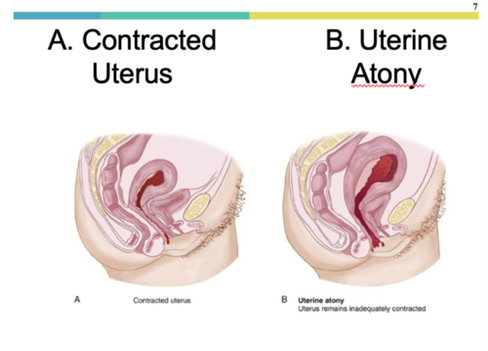Introduction
Introduction ( 6 Questions)
A nurse is caring for a client who had a vaginal delivery 4 hours ago.
The nurse notes that the client’s fundus is boggy, deviated to the right, and above the umbilicus.
The client’s perineal pad is saturated with blood.
What is the most likely cause of this client’s postpartum hemorrhage?
This is when the uterus does not contract enough to stop the bleeding from the placental site after delivery. It is the most common cause of postpartum hemorrhage. A boggy, deviated and above the umbilicus fundus indicates uterine atony.

It occurs when some or all of the placenta remains in the uterus after delivery. It can also cause postpartum hemorrhage, but it usually presents with a firm fundus and a continuous trickle of blood.
It is a rare condition where the uterus turns inside out after delivery. It can also cause postpartum hemorrhage, but it usually presents with severe pain, shock and a palpable mass at the introitus.
It is a tear in the cervix that can occur during delivery. It can also cause postpartum hemorrhage, but it usually presents with a firm fundus and bright red bleeding that does not respond to uterine massage.
This is when the uterus does not contract enough to stop the bleeding from the placental site after delivery. It is the most common cause of postpartum hemorrhage. A boggy, deviated and above the umbilicus fundus indicates uterine atony.
Choice B. Retained placenta is wrong because it occurs when some or all of the placenta remains in the uterus after delivery. It can also cause postpartum hemorrhage, but it usually presents with a firm fundus and a continuous trickle of blood.
Choice C. Uterine inversion is wrong because it is a rare condition where the uterus turns inside out after delivery. It can also cause postpartum hemorrhage, but it usually presents with severe pain, shock and a palpable mass at the introitus.
Choice D. Cervical laceration is wrong because it is a tear in the cervix that can occur during delivery. It can also cause postpartum hemorrhage, but it usually presents with a firm fundus and bright red bleeding that does not respond to uterine massage.
